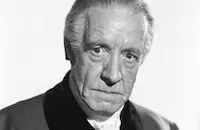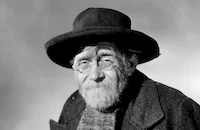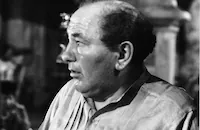Suzy

Brief Synopsis
Cast & Crew
Geo. Fitzmaurice
Jean Harlow
Franchot Tone
Cary Grant
Lewis Stone
Benita Hume
Film Details
Technical Specs

Synopsis
On the eve of World War I, Suzy Trent, an American show girl working in London, loses her job when the show closes and resolves to marry an aristocrat. One day, she is bumped by a chauffeur-driven car, and the "lord" offers to give her a ride home, but she soon discovers that he is actually a poor inventor named Terry Moore. Despite Terry's poverty, Suzy falls in love with him, and accompanies him to a factory, where each night he secretly works on his new invention, an airplane stabilizer. When his employer, Mrs. Schmidt arrives, she angrily tells them to leave but does not see Suzy, who has hidden. Suzy then hears Mrs. Schmidt and another woman and man talking in German, but does not understand them. When Terry returns for Suzy, Schmidt sees him and, worried that he knows that they are spies, sweetly offers him a job as plant manager to keep him quiet. An elated Terry then proposes to Suzy, and they quickly marry. When they return to her place to pack, Mrs. Schmidt's female cohort follows them and shoots Terry.
Terrified because Terry appears to be dead and another tenant calls the police to report that Suzy killed him, she runs away. She then goes to Paris to see her friend Maisie and gets a job as a singer in a cabaret. There she meets Andre Charville, an "ace" flyer who is attracted to her. They fall in love that night and immediately marry. One week later, Andre takes her home to his father, the Baron Charville, who is accustomed to Andre's impulsiveness, but is not happy with the marriage. When Andre's leave is suddenly cancelled, Suzy stays at his father's house. Soon her kindness and devotion to Andre impresses the baron and they become very fond of each other. While Andre is acclaimed as a national hero, it becomes apparent that he has been having affairs with other women, particularly a certain Madame Diane Eyrelle. Suzy is miserable without him, and when he gets a leave, his father has to beg him to be kind to Suzy. After Andre returns to the front, Suzy pretends to be happy for the baron's sake and each day reads the supposed contents of Andre's letters to her, even though he never writes.
Meanwhile, in England, Terry, who was only wounded in the shooting, has become successful as the inventor of the stabilizer. As part of his work, he is asked to fly some planes over to Andre, unaware of his connection to Suzy. Because Andre has been wounded, Suzy goes to visit him and she and Terry run into each other in the hospital. They are both shocked, but pretend not to know each other. She later feels that she must tell Andre eveything. When she goes back to Andre's room, she sees him kissing someone, but does not know that the woman is Mme. Eyrelle. Suzy then goes to Terry who is initially angry, but soon promises to set her free from their marriage. When he meets Mme. Eyrelle, neither can remember where they have met before, but later, when Suzy sees a picture of Mme. Eyrelle in a magazine, she recognizes her as the woman at Mrs. Schmidt's factory.
Suzy goes to Terry with the information and he agrees to help her. They then go to Andre, who has recuperated and is visiting Mme. Eyrelle's chateau. When the spy is exposed, one of her followers shoots Andre. Andre then asks Terry to fly his planned mission for him and begs for Suzy's forgiveness before he dies. Terry's mission is a success, but returning to the airfield, his plane crashes near the chateau. Knowing that the baron would be heartbroken to find that his son died because of his involvement with a spy, Suzy convinces Terry to place Andre's body in the plane and make it appear that he has died heroically. A short time later, at a ceremony honoring Andre, a German aviator flies overhead and drops a bouquet of flowers, after which Terry escorts Suzy back to Paris.

Director

Geo. Fitzmaurice
Cast

Jean Harlow

Franchot Tone

Cary Grant

Lewis Stone

Benita Hume
Reginald Mason
Inez Courtney
Greta Meyer
David Clyde

Christian Rub
George Spelvin

Una O'connor
Theodore Von Eltz

Stanley Morner

Charles Judels
Tempe Pigott
Elspeth Dudgeon
Tyler Brooke
Robert Livingston
Ferdinand Gottschalk
Juan De La Cruz

Luana Walters
Drew Demorest
Frank Dawson
Charles Mcnaughton
Forrester Harvey
John Rogers

Harry Cording
Adrienne D' Ambricourt
Joseph R. Tozer
Hugh Huntley
George Davis
Robert Adair
Crew
Harold Adamson
Dr. William Axt
George Boemler
Norbert Brodine
Alan Campbell
Lenore Coffee
Walter Donaldson
Cedric Gibbons
Horace Jackson
Ray June
Doris Lind
Wm. Anthony Mcguire
Dorothy Parker
Maurice Revnes
Sandy Roth
Gabriel Scognamillo
Douglas Shearer
Dolly Tree
Edwin B. Willis

Photo Collections
Videos
Movie Clip



Film Details
Technical Specs

Award Nominations
Best Song
Articles
Suzy
The script for Suzy had a lot of fingerprints on it. The legendary wit Dorothy Parker and her husband Alan Campbell had written a version, as had several others. Cary Grant, up-and-coming but not yet a major star, was loaned by Paramount to MGM for this film, and he was so unhappy with the script that he refused to do the film. Enter writer Lenore Coffee, who offered to make whatever changes Grant wanted. The two of them locked themselves into a hotel room and rewrote the script. The final version, while still heavy on melodrama and plot complications, had some lightness and charm, particularly during the romantic scenes between Grant and Harlow. It also had an Oscar-nominated song, "Did I Remember?" warbled by Grant and (a dubbed) Harlow. And it had some exciting aviation scenes, recycled from the Howard Hughes film, Hell's Angels (1930), which had provided Harlow with her first important film role.
While praising Harlow's performance in Suzy, most critics echoed Richard Watts, Jr.'s review in the New York Herald Tribune: "I will go on screaming in my customary wilderness that it is a great shame to waste Miss Harlow in such a role, when she should be exercising her vast gifts as a half-sophisticated, half-innocent comic." The studio paid attention, and her remaining films would all showcase her comic talents. Tragically, there would only be three more. Harlow died in June of 1937, at the age of 26.
Director: George Fitzmaurice
Producer: Maurice Revnes
Screenplay: Dorothy Parker, Alan Campbell, Horace Jackson, Lenore Coffee, based on the novel by Herbert Gorman
Editor: George Boemler
Cinematography: Ray June
Art Direction: Cedric Gibbons, Gabriel Scognamillo, Edwin B. Willis
Music: Dr. William Axt; song, "Did I Remember?" by Walter Donaldson, Harold Adamson
Cast: Jean Harlow (Suzy Trent), Franchot Tone (Terry Moore) Cary Grant (Andre Charville), Benita Hume (Mme. Diane Eyrelle), Lewis Stone (Baron Charville).
BW-94m.
by Margarita Landazuri

Suzy
Quotes
Trivia
Notes
According to a news item in Hollywood Reporter on November 24, 1934, M-G-M purchased Herbert Gorman's novel shortly its after publication for $15,000. News items in Hollywood Reporter from May through September 1935 note that Philip Wylie was the first writer assigned to work on the script, successively followed by John C. Higgins, Herman Mankiewicz, Erskine Gwynne and Ernest Vajda. None of these writers are credited onscreen, in reviews or in Screen Achievements Bulletin, and the extent of their participation in the released film has not been determined. According to Screen Achievements Bulletin, William Anthony McGuire was a contributing writer, but did not want to be credited. A Hollywood Reporter news item on July 3, 1936 noted that Doris Lind had been engaged by M-G-M to write new scenes for the picture after unfavorable out-of-town previews convinced studio executives to reshoot portions of it. Norbert Brodine was borrowed from Universal to shoot the added scenes because cameraman Ray June was ill. A Hollywood Reporter news item in March 1936 mentioned that Clark Gable was initially to star in the picture. Suzy was the only film in which Cary Grant and Jean Harlow appeared together. The scene in which Harlow's character sings "Did I Remember" and is joined by Grant's character, is frequently shown in documentaries about their respective careers.

Miscellaneous Notes
Released in United States 1936
Released in United States 1936













